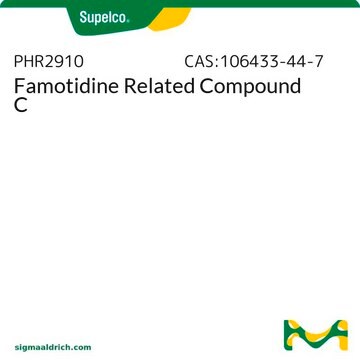ABN1674M
Anti-RanGAP
from rabbit
Sinónimos:
Ran GTPase-activating protein, Protein segregation distorter
About This Item
Productos recomendados
biological source
rabbit
Quality Level
antibody form
unpurified
antibody product type
primary antibodies
clone
polyclonal
species reactivity
Drosophila, human
packaging
antibody small pack of 25 μL
technique(s)
immunocytochemistry: suitable
immunohistochemistry: suitable
western blot: suitable
isotype
IgG
NCBI accession no.
UniProt accession no.
target post-translational modification
unmodified
Gene Information
human ... RANGAP1(5905)
General description
Specificity
Immunogen
Application
Immunohistochemistry Analysis: A representative lot detected RanGAP in human C9-ALS motor cortex (Zhang, K., et. al. (2015). Nature. 525(7567):56-61).
Western Blotting Analysis: A representative lot detected RanGAP in Drosophila testis (Merrill, C., et. al. (1999). Science. 283(5408):1742-5;Kusano, A., et. al. (2001). Dev Cell. 1(3):351-61.
Immunocytochemistry Analysis: A representative lot detected RanGAP in Drosophila primary spermatocytes (Kusano, A., et. al. (2002). Proc Natl Acad Sci USA. 99(10):6866-70).
Western Blotting Analysis: A representative lot detected RanGAP in purified human RanGAP1 (Zhang, K., et. al. (2015). Nature. 525(7567):56-61).
Neuroscience
Quality
Western Blotting Analysis: A 1:1,000 dilution of this antibody detected RanGAP in SD-RanGAP Mad fly testis & Wild-type Fly testis.
Target description
Physical form
Storage and Stability
Other Notes
Disclaimer
Not finding the right product?
Try our Herramienta de selección de productos.
Storage Class
12 - Non Combustible Liquids
wgk_germany
WGK 1
Certificados de análisis (COA)
Busque Certificados de análisis (COA) introduciendo el número de lote del producto. Los números de lote se encuentran en la etiqueta del producto después de las palabras «Lot» o «Batch»
¿Ya tiene este producto?
Encuentre la documentación para los productos que ha comprado recientemente en la Biblioteca de documentos.
Nuestro equipo de científicos tiene experiencia en todas las áreas de investigación: Ciencias de la vida, Ciencia de los materiales, Síntesis química, Cromatografía, Analítica y muchas otras.
Póngase en contacto con el Servicio técnico








